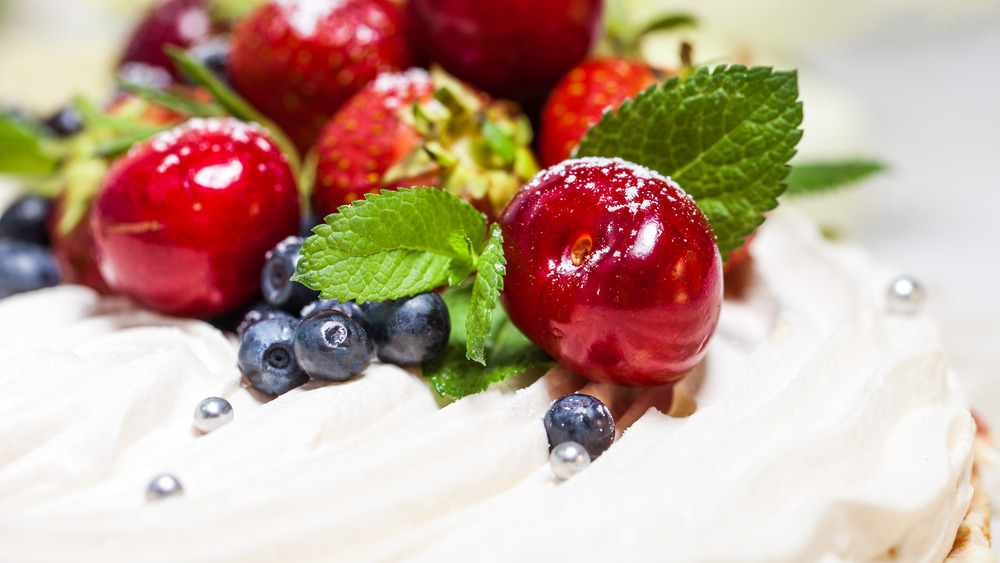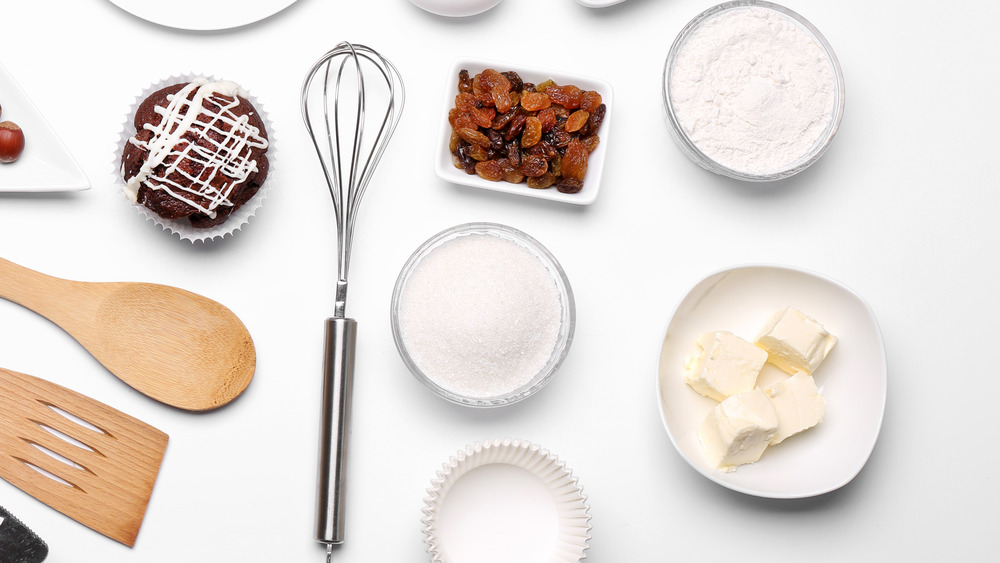Don't Make This Common Pavlova Mistake
Pavlova is a traditional holiday dish of the Southern Hemisphere. Often eaten around Christmas, this light yet multi-dimensional dish is a perfect complement to warm December days (remember the seasons are opposite Down Under). If you are unfamiliar with pavlova, it's a meringue dish based on egg whites with a mild crispy outside and a marshmallow-style center. The dish is traditionally topped with fruit and cream and was named after Russian ballerina Anna Pavlova, who visited both New Zealand and Australia in the 1920s (via BBC).
While Australia attempts to claim this dish as its own, be assured that this is a New Zealand dish, as backed up by authorities on the subject. Dr. Helen Leach of New Zealand's University of Otago claims, "I can find at least 21 pavlova recipes in New Zealand cookbooks by 1940, which was the year the first Australian ones appeared," (via Daily Telegraph, per BBC). Controversy aside, this dish is delicious, but not widely available in the U.S. so many people attempt to bake this confection at home.
Unfortunately, pavlova can be a little tricky — but there's a common mistake that everyone makes and it's a simple fix.
Pavlova requires the right kind of sugar
Basic pavlova recipes are simple, and usually include egg whites, sugar, cream of tartar, and cornstarch (via Sugar, Salt, Magic). What many Americans don't realize is that not all sugar is the same. Summing up my mother's experience, "Not a single pavlova worked until I found the right sugar." So what's the key ingredient here? It's called caster sugar. But what exactly is caster sugar?
A common ingredient in countries like Australia and New Zealand, caster sugar is a super fine sugar (via Sugar, Salt, Magic). Technically available in both a brown sugar and also a white, pavlova calls for the drier white variety. Visually, the sugar looks like a super fine version of your standard white granulated sugar. You can sometimes find this on the shelf labeled as "superfine or baker's sugar." There are some pretty good reasons you can't substitute this ingredient too. Standard white sugar takes too long to dissolve but powdered or confectioners' sugar doesn't work either — believe it or not these aren't pure sugar! (via Bon Apetit). Brown sugars are also a poor choice as they can add too much moisture and lead to a super sticky dessert base.
Once you've got the ingredients just right, pavlova making gets a whole lot easier — but don't forget the finishing touches. Whipped cream (not whipped topping) provides your frosting on top to anchor slices of your favorite fruits and berries. Try your own pavlova at home today!

